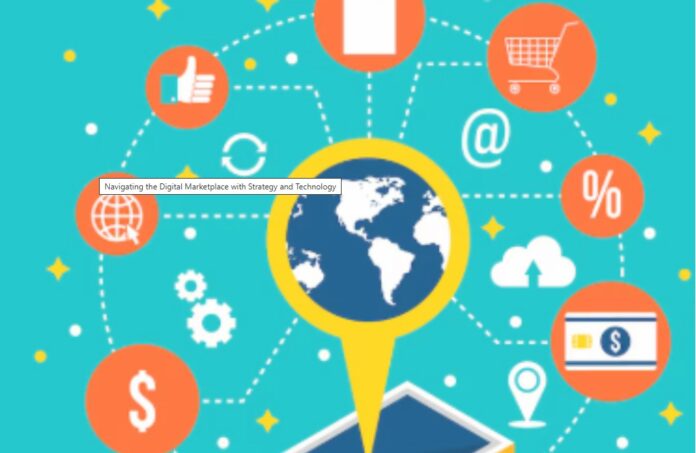Ecommerce has transformed dramatically over the past decade, becoming a cornerstone of global retail and business strategy. In 2025, the online shopping landscape is more competitive, sophisticated, and customer-driven than ever before. Businesses aiming for success must not only understand the latest trends but also implement cutting-edge technologies and robust strategies.
This article delves into the key components shaping AI-driven ecommerce web design today and offers actionable insights to help businesses thrive. We also discuss how expert ecommerce development services can provide a competitive edge.
The Ecommerce Boom: Market Overview and Growth Drivers
The rise of ecommerce has been accelerated by technological innovation and changing consumer behaviors. Mobile shopping, social media integration, and global connectivity have opened new avenues for businesses of all sizes.
Key factors fueling ecommerce growth include:
- Digital-First Consumer Behavior: Online shopping has become a primary method for purchasing everything from essentials to luxury goods.
- Advancements in Technology: AI, cloud computing, and mobile tech enhance the shopping experience.
- Global Reach: Small businesses can now reach international markets with relative ease.
- Changing Expectations: Shoppers demand convenience, personalization, and speed.
Critical Trends Shaping Ecommerce in 2025
Personalization at Scale
Personalization is no longer optional. AI algorithms analyze browsing history, purchase patterns, and demographic data to tailor recommendations, marketing messages, and pricing. This level of customization increases conversion rates and customer loyalty.
Omnichannel Retailing
Customers expect seamless experiences across online stores, physical locations, mobile apps, and social media. Omnichannel strategies unify inventory, customer data, and marketing efforts to provide consistent engagement regardless of platform.
Social Commerce and Influencer Marketing
Social media platforms have become powerful sales channels. Features like shoppable posts and live commerce events allow brands to showcase products and engage audiences in real-time. Influencer partnerships add authenticity and reach.
Advanced Fulfillment and Logistics
Fast, flexible delivery options such as same-day shipping and curbside pickup have become industry standards. Efficient logistics networks supported by automation and data analytics optimize supply chains and reduce costs.
Building a Robust Ecommerce Website: Best Practices
A successful ecommerce website combines functionality, security, and user experience.
Mobile-Optimized Design
With the majority of ecommerce traffic coming from mobile devices, responsive design is critical. Easy navigation, quick loading, and simplified checkout processes enhance mobile usability.
Secure and Flexible Payment Options
Offering multiple payment methods — credit cards, digital wallets, BNPL, and emerging options like cryptocurrencies — meets diverse customer preferences. Ensuring PCI compliance and encryption protects sensitive data.
Scalable Backend Systems
Inventory management, order processing, customer relationship management (CRM), and analytics must work together seamlessly. Scalable cloud-based solutions support growth without compromising performance.
Many businesses partner with specialized ecommerce development providers who deliver custom solutions tailored to unique business needs. For example, companies often look to expert services to build reliable, feature-rich platforms.
Leveraging Data Analytics to Drive Ecommerce Performance
Data is central to informed decision-making. From user behavior tracking to sales metrics, analytics tools empower businesses to:
- Refine product offerings based on trends.
- Optimize marketing spend through targeted campaigns.
- Identify bottlenecks in the purchase funnel.
- Improve customer retention strategies.
Real-time dashboards and AI-powered predictive analytics further enhance agility in responding to market changes.
Enhancing Customer Experience (CX)
CX remains a key differentiator. Strategies include:
- Personalized Content and Recommendations: Engage customers with relevant products and offers.
- Multi-Channel Support: Chatbots, email, social media, and phone support provide accessible assistance.
- Flexible Shipping and Returns: Options that match customer expectations improve satisfaction.
- Loyalty Programs and Incentives: Encourage repeat purchases and advocacy.
Ecommerce Marketing: Strategies for 2025
Effective marketing blends creativity with data insights:
- Content Marketing: High-quality blogs, videos, and guides educate and attract customers.
- Social Media Campaigns: Targeted ads and influencer collaborations build brand awareness.
- Search Engine Optimization (SEO): Maintains organic search visibility.
- Email Automation: Nurtures leads and encourages repeat business.
- Paid Advertising and Retargeting: Capture interested shoppers efficiently.
Integrating marketing automation platforms enhances efficiency and tracking.
Security and Compliance: Protecting Business and Customers
Security is paramount in ecommerce. Implementing SSL certificates, PCI DSS compliance, fraud prevention, and data privacy policies protects customers and builds trust. Staying current with regulations like GDPR and CCPA is essential.
Mobile Commerce (M-Commerce): Dominating the Market
Mobile devices dominate ecommerce traffic. Optimizing for mobile includes:
- Fast load times and intuitive interfaces.
- Mobile wallets and one-click payment.
- Push notifications for personalized deals.
- Location-based marketing.
Scaling and Expanding Ecommerce Operations
Growth demands scalable technology and processes:
- Cloud hosting and microservices enable flexibility.
- API integrations connect ecommerce platforms with ERP, CRM, and marketing tools.
- Automation in order fulfillment and customer service boosts efficiency.
- International expansion requires localization, compliance, and logistics planning.
Choosing the Right Ecommerce Development Partner
Partnering with experts accelerates success. They bring:
- Technical expertise in ecommerce platforms and integrations.
- Experience with security, compliance, and performance optimization.
- Strategic guidance tailored to your market and goals.
- Ongoing support and innovation.
Businesses often leverage trusted ecommerce development specialists, similar to those found at this ecommerce solutions hub, to build competitive and scalable stores.
Conclusion: Ecommerce Success in 2025 and Beyond
Ecommerce continues to reshape the retail landscape. Businesses that embrace personalization, omnichannel strategies, advanced technologies, and customer-centric approaches will thrive.
Investing in a well-designed, secure, and scalable ecommerce platform supported by expert development teams ensures readiness for current challenges and future opportunities.
Whether launching a new store or scaling an existing business, adopting best practices and leveraging expert partners is key to sustainable growth and competitive advantage.
Advanced Ecommerce Features for Competitive Advantage
Beyond the basics, certain advanced features are rapidly becoming standard for top-tier ecommerce stores:
AI-Powered Product Discovery
Advanced search engines use natural language processing and AI to help shoppers find products quickly and intuitively. Features include autocomplete, synonym matching, and visual search where customers upload photos to find similar items.
Subscription and Membership Models
Many ecommerce businesses are incorporating subscription services to create steady revenue streams. Membership benefits like early access, exclusive discounts, and personalized perks boost customer lifetime value.
Customer Reviews and Social Proof
Authentic reviews build trust and influence purchase decisions. Integrating social proof, such as user-generated content and influencer endorsements, enhances credibility.
Dynamic Pricing
Real-time data allows businesses to adjust prices based on demand, inventory, competitor pricing, and customer segments. Dynamic pricing maximizes profitability while remaining competitive.
Sustainable Ecommerce: A Growing Priority
Consumers increasingly value sustainability. Ecommerce businesses are responding by:
- Eco-Friendly Packaging: Using recyclable or biodegradable materials.
- Carbon-Neutral Shipping: Partnering with carriers that offset emissions.
- Sustainable Sourcing: Promoting ethically produced and environmentally friendly products.
- Transparency: Sharing sustainability efforts openly builds consumer trust.
Sustainable practices are not just ethical but often drive stronger brand loyalty and appeal to conscious consumers.
International Ecommerce: Expanding Horizons
Global ecommerce offers tremendous opportunities but requires careful planning:
- Localization: Adapting language, currency, payment options, and marketing messages for each market.
- Compliance: Navigating import/export regulations, taxes, and data privacy laws.\
- Logistics: Partnering with reliable international carriers and managing customs efficiently.
- Customer Support: Providing multilingual support and handling returns internationally.
Many development teams offer expertise in building ecommerce stores designed for seamless international expansion.
The Role of Headless Commerce
Headless commerce decouples the frontend presentation layer from the backend ecommerce engine, offering unmatched flexibility. This architecture enables:
- Faster website performance
- Customizable user experiences across multiple channels (web, mobile, IoT)
- Easier integration with third-party systems and content management platforms
Adopting headless commerce is ideal for businesses looking to innovate rapidly and tailor experiences for diverse customer segments.
Leveraging Cloud Computing for Ecommerce Scalability
Cloud infrastructure supports the scalability ecommerce demands:
- Elastic Resources: Automatically scale server capacity during high traffic periods like holidays or sales events.
- Reduced Downtime: Cloud providers ensure high availability with global data centers.
- Cost Efficiency: Pay-as-you-go models reduce upfront investment.
- Security: Enterprise-grade protection for data and transactions.
Cloud-based ecommerce platforms and hosting solutions offer robust performance and adaptability.
Payment Innovations Driving Conversion
Streamlining payment processes reduces cart abandonment and improves user satisfaction. Key trends include:
- One-Click Payments: Storing payment details securely for rapid checkout.
- Buy Now, Pay Later (BNPL): Offering flexible financing options appeals to budget-conscious shoppers.
- Cryptocurrency Payments: Some ecommerce sites accept Bitcoin and other cryptocurrencies to capture tech-savvy markets.
- Mobile Wallets: Apple Pay, Google Pay, and similar services offer secure and fast transactions.
Partnering with payment gateways that support these methods enhances conversion rates.
Customer Data Privacy and Compliance
With increased data collection comes responsibility. Ecommerce businesses must:
- Obtain clear consent for data collection.
- Secure personal and payment information.
- Adhere to regulations like GDPR in Europe and CCPA in California.
- Provide transparency on data use.
Failing to comply risks fines and reputational damage. Working with development teams knowledgeable in privacy standards ensures adherence to best practices.
The Growing Importance of Voice and Visual Commerce
Voice Commerce
Smart speakers and voice assistants (Alexa, Google Assistant) are changing how consumers shop. Voice commerce enables:
- Hands-free search and ordering
- Personalized shopping lists
- Reordering favorite items via voice commands
Optimizing ecommerce platforms for voice search enhances accessibility and captures this emerging market.
Visual Commerce
Visual search and augmented reality allow customers to explore products in immersive ways:
- Upload images to find similar products
- Preview items like furniture or apparel in real environments via AR apps
- Interactive product videos and 3D models
Incorporating visual commerce technology enhances engagement and reduces purchase hesitation.
Building Loyalty Through Experience and Innovation
Customer loyalty depends on more than just price. Businesses can cultivate loyalty by:
- Delivering consistent, exceptional experiences
- Offering rewards and referral programs
- Soliciting and acting on customer feedback
- Engaging customers through social media and content
- Launching innovative product lines or services that meet evolving needs
Using data analytics to understand customer behavior enables personalized loyalty programs that drive repeat purchases.
Case Study: Transforming an Ecommerce Store with Expert Development
Consider a mid-sized retailer seeking to expand online presence and improve sales. By collaborating with an experienced Markham ecommerce web design agency, they:
- Migrated from an outdated platform to a scalable cloud-based solution
- Integrated AI-powered product recommendations and advanced search
- Implemented omnichannel inventory and order management
- Optimized mobile experience and streamlined checkout
- Launched targeted marketing campaigns with automation
- Adopted sustainable packaging and communicated eco-efforts transparently
Within a year, the retailer saw:
- 45% increase in conversion rates
- 30% growth in average order value
- Improved customer satisfaction and retention
This example illustrates how expert development and strategic initiatives drive measurable results.
Final Thoughts: Preparing for Ecommerce’s Future
Ecommerce in 2025 is defined by innovation, agility, and customer-centricity. Success requires:
- Embracing technology to enhance personalization, UX, and operational efficiency
- Prioritizing security and compliance
- Leveraging data for continuous improvement
- Building sustainable and socially responsible practices
- Partnering with knowledgeable development teams to implement best-in-class solutions
If your business is ready to evolve or scale its ecommerce presence, exploring professional services like those offered can provide invaluable expertise and support.




